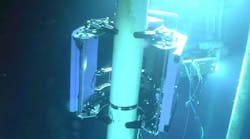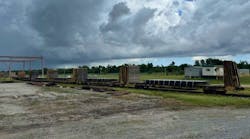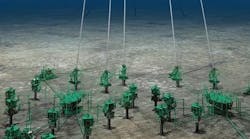Offshore staff
DORSET, UK -- Two of Hamworthy’s onboard LNG regasification plant installations will undergo gas trials this summer--one on a floating storage and regasification unit (FSRU) for Brazil, the other on a shuttle regasification vessel (SRV) destined for the US.
In July 2007, Hamworthy signed a contract with Golar LNG for a system comprising three LNG regasification skids to be retrofitted on the 2004-built LNG carrier Golar Winter. The vessel was converted into an LNG floating storage and regasification unit (FSRU) by Keppel Shipyard in Singapore. Chartered by Petrobras, the vessel will shortly be moving to the Guanabara Bay LNG import project offshore Brazil. Gas trials and start-up are due to take place in July.
Hamworthy delivered the three propane regasification skids at the end of 2008. Capacity per skid is 7 MMcm/d, outlet pressure is 103 bar, and outlet temperature up to 6° C. Two skids will be used during nominal send-out, while the third is on stand-by.
Each skid contains the required pumps, motors, heat exchangers, instrumentation, and control systems to provide the required capacity. The equipment is designed for marine installations and cryogenic working conditions and can handle large variations in send-out capacity, the company says.
“The equipment has a high level of efficiency as it is based on seawater heating and therefore requires less fuel and operating cost to regasify the LNG than steam-based systems,” says Tore Lunde, managing director of Hamworthy Gas Systems. The Golar Winter system is based on seawater heating a closed propane loop: the intermediate propane circuit between seawater and LNG is applied to avoid freezing.
The company also installed an onboard vaporizer system for the LNG shuttle regasification vessel (SRV) Suez Neptune. SRVs are designed to transport and store LNG, and then vaporize it into natural gas that can be sent ashore by subsea pipeline. Suez Neptune is the first of two SRVs ordered from Samsung in South Korea for Höegh LNG to serve the Neptune terminal in Boston, Massachusetts. Gas trials are scheduled for August. Each ship set will have a regasification capacity of 210 metric ton/hr of LNG with a send-out pressure of 115 bar. Gas trials will take place on the second Neptune SRV, Suez Cape Ann, in June 2010.
07/22/2009




